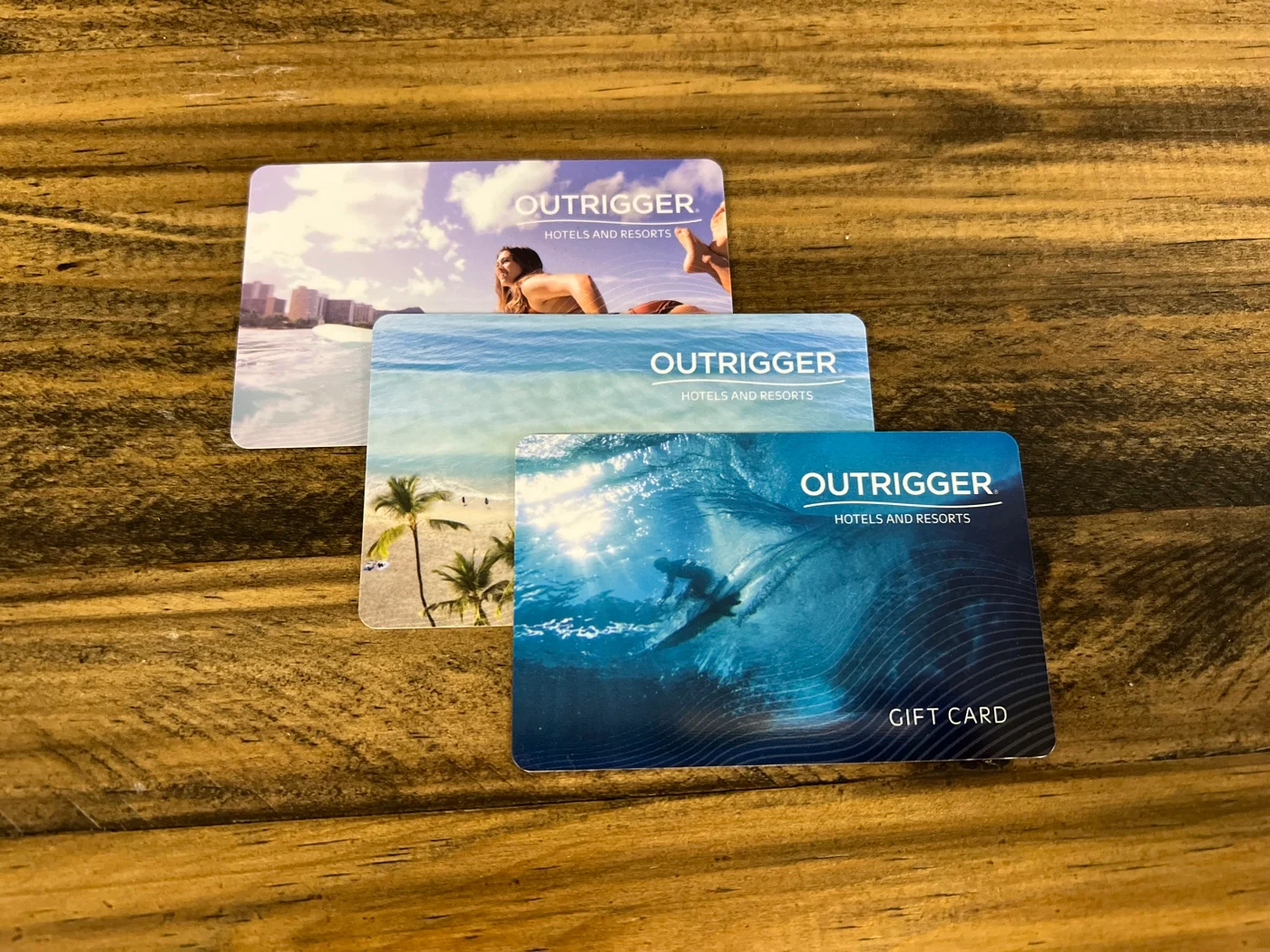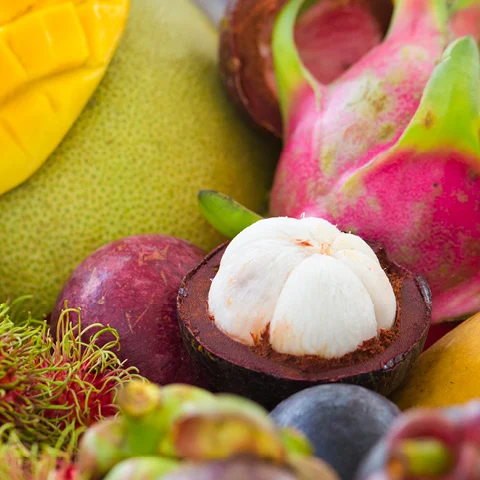























































Rooms up to 25% off!


Loyalty member offers


Gift Cards
Rewarding OUTRIGGER DISCOVERY benefits
- Enjoy exclusive member-only room rates and carefully curated experiences and local offers
- Earn DISCOVERY Dollars (D$) to spend towards your stay, or however you like!
- Use your benefits at more than 800+ resorts and hotels around the world
- Elite tier members earn more D$ and get perks like room upgrades and early check-in
- Free and easy to join!





Exotic Fruit 101
Beyond the iconic pineapple, Hawaii farmers cultivate a colorful array of exotic, tropical fruits. Mangoes, papayas, guava, breadfruit, coconut, avocado, banana and berries can now all be readily found at local farmers markets and supermarkets. Not only do some of these tropical fruits create the most beautiful snaps for the 'gram, they also taste delicious.
So what are some of these fruits and what do they taste like? Here’s an alphabetic sampling of some of the more popular fruits.
Abiu (Pouteria caimito): The yellow, baseball-sized fruit hails from the Amazon and possesses a gummy latex exterior that needs to be peeled. Its transparent flesh has been described as tasting like vanilla pudding with a hint of caramel or a gel blend of melon and persimmon.
Breadfruit (Artocarpus altilis):
A flowering tree in the mulberry family, breadfruit grows throughout most Pacific Ocean
islands and can substitute for a meal’s starch component. When cooked, ‘ulu, breadfruit in Hawaiian, has a potato-like flavor. The versatile fruit can be grilled, boiled, roasted, baked
or fried.
Caimito (Chrysophyllum cainito):
Commonly known as star apple, this fruit is a native of the Greater Antilles and West Indies. When cut horizontally, the core resembles a star-like appearance and hence its name. Its flavor profile is a cross between custard and an apple.
Dragon fruit (Hylocereus):
Tasting like a pear-and-kiwi hybrid, the dragon fruit or pitaya is a type of cactus and
comes in three primary colors: white, red and magenta. To determine ripeness, look for bright, even-colored skin with few blotches.
Durian (Durio zibethinus):
While it may be recognized as the king of fruits in Southeast Asia, Westerners usually can’t get past its pungent aroma or “stinky feet” smell. Famed naturalist Alfred Russel Wallace described its flesh as “a rich custard highly flavored with almonds.”
Jackfruit (Artocarpus heterophyllus):
Weighing on average 20 to 40 pounds, the jackfruit comes from the East Indies. Some say it tastes like Juicy Fruit gum while others consider it a cross between a banana and papaya. Its buttery flesh is dense with fiber and often described as starchy.
Langsat (Lansium domesticum):
These tiny, yellow, orb-shaped fruits grow in clusters and can be quite sour when unripe, but are perfectly sweet when ripe with hints of grape and orange.
Lilikoi (Passiflora edulis):
The passion fruit plant produces a spectacular 1- to 3-inch flower with yellow or purple fruit. Seeds of the purple variety were first planted on Maui in 1880 by Eugene Delemar who brought them from Australia and planted them at his ranch in an area still known as “Lilikoi Gulch.” Varying flavor profiles include mango with a touch of lemon and a mix between a papaya and pineapple.
Mangosteen (Garcinia mangostana):
Believed to have originated in the Sunda Islands and the Moluccas of Indonesia, the fragrant, edible flesh of the purple mangosteen is sweet, tangy, citrusy and peachy. Its hard shell must be split with a knife and cracked open.
Rambutan (Nephelium lappaceum):
Similar to lychee and longans, rambutans are covered with soft spines. Indigenous to the Malay Archipelago, the name of this fruit is derived from the Malay word meaning “hairy,” and you can see why. But once the hairy exterior is peeled away, the tender, fleshy fruit offers a balance of sweet and sour, much like a grape.
White sapote (Casimiroa edulis):
Native to Mexico, the white sapote has a flavor that ranges from banana-like and peach to pear and vanilla flan. It’s sometimes called “custard apple” because of the smooth texture of its flesh, similar to that of a Granny Smith apple.
So whether it’s a piece of abiu or white sapote, you’ll want to sample the fruits of Hawai‘i. But we warn you, you may never want to go home after tasting these honey-sweet fruits.